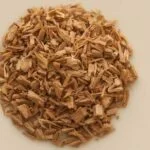Are you curious about the world of aromatherapy and its potential benefits? Look no further, as this article serves as a guide to aromatherapy, delving into everything from its history to its practical application in daily life. Aromatherapy is not just about pleasant scents; it’s a practice that has been used for centuries to promote physical, emotional, and mental well-being.
Aromatherapy has a rich history that spans ancient civilizations to the modern world. In this section, we will explore the basics of aromatherapy, including its origins, how it works, popular essential oils and their uses, and the potential benefits it can offer. Whether you are new to aromatherapy or looking to deepen your understanding of this practice, this comprehensive guide will provide you with valuable information to enhance your wellness journey.
Understanding the fundamentals of aromatherapy is key in harnessing its potential benefits. By exploring the science behind scents and learning about various techniques for incorporating aromatherapy into your daily routine, you can unlock the power of scent for stress relief, immune support, and overall holistic wellness. Explore with us as we embark on a journey through the world of aromatherapy and discover its potential impact on your well-being.
The History of Aromatherapy
The use of aromatherapy dates back thousands of years, with evidence of its practice found in ancient civilizations such as Egypt, China, India, and Greece. In these early cultures, aromatic plants and their oils were used for religious rituals, medicinal purposes, and even in everyday life. The Egyptians were known for their extensive use of essential oils in the embalming process and for their perfume-making skills. They also used aromatic substances for both physical and psychological healing.
Aromatherapy in Traditional Chinese Medicine
In traditional Chinese medicine, the use of aromatic herbs and oils has been a part of healing practices for centuries. Aromatherapy is often associated with acupuncture and acupressure to help balance the body’s energy or “qi.” The Chinese also utilized aromatic substances to aid in meditation, promote relaxation, and treat various health conditions.
The Renaissance and Modern Aromatherapy
Aromatherapy experienced a revival during the Renaissance period when essential oils were used to combat the spread of disease. In the early 20th century, French chemist René-Maurice Gattefossé coined the term “aromatherapy” after discovering the healing properties of lavender oil when he accidentally burned himself and found that lavender oil helped to heal his wounds without scarring. This sparked scientific interest in the therapeutic benefits of essential oils.
As modern medicine continues to embrace more holistic approaches to healthcare, aromatherapy has gained recognition as a complementary therapy to improve overall well-being. Its rich history demonstrates that aromatherapy is not just a passing trend but has stood the test of time as a valuable healing practice.
How Aromatherapy Works
Aromatherapy is a holistic healing treatment that uses natural plant extracts to promote health and well-being. But how exactly does aromatherapy work? Understanding the science behind the scents can help us comprehend the therapeutic benefits of essential oils and how they interact with our bodies.
The primary way aromatherapy works is through the sense of smell. When inhaling the aroma of essential oils, the olfactory system, which includes the nose and brain, is stimulated. The molecules in the oils travel through the nose to the olfactory nerve, where they send signals to the limbic system – the part of the brain that controls emotions, memories, and behavior. This is why certain scents have the power to evoke specific emotions or memories.
In addition to affecting our emotions and memories, aromatherapy also has physical effects on the body. When essential oil molecules are inhaled or absorbed through inhalation or skin application, they can have an impact on our physiological state. For example, some essential oils have anti-inflammatory properties that can help reduce pain and swelling when applied topically.
Others may have antimicrobial or antioxidant properties that can support immune function and overall health. Therefore, understanding how aromatherapy works involves recognizing its ability to influence both mind and body for therapeutic purposes.
Essential Oils 101
Understanding Essential Oils
Essential oils are highly concentrated plant extracts that retain the natural smell and flavor of their source. They are typically extracted through distillation or cold pressing, and each oil has a unique chemical composition that gives it distinct properties and uses. It’s important to note that essential oils should never be ingested, as they are potent and can cause harm if not used properly.
Popular Essential Oils and Their Uses
One of the most popular essential oils is lavender, known for its calming and relaxing effects. It is often used to promote sleep, reduce stress, and alleviate anxiety. Peppermint oil is another commonly used oil with its invigorating scent that can help boost energy levels and soothe headaches. Tea tree oil is well-known for its antimicrobial properties, making it a popular choice for treating acne and promoting healthy skin.
How to Use Essential Oils
There are several ways to use essential oils, including aromatherapy diffusers, topical application, and inhalation. Aromatherapy diffusers disperse the essential oil particles into the air, allowing you to breathe in the aroma. For topical application, it’s important to dilute the essential oil with a carrier oil before applying it to the skin to prevent irritation.
Inhalation involves directly inhaling the scent from the bottle or adding a few drops to hot water for steam inhalation. Each method of use has its own benefits and considerations, so it’s important to research and follow guidelines for safe use.
The Benefits of Aromatherapy
Aromatherapy has been known to provide a wide range of benefits for both the mind and body. One of the most well-known benefits is stress relief. Certain essential oils, such as lavender and chamomile, have calming properties that can help reduce feelings of anxiety and stress.
These scents can be diffused in the air or applied topically to promote relaxation and a sense of well-being. In addition to stress relief, aromatherapy has also been linked to immune support. Essential oils like eucalyptus and tea tree have antimicrobial properties that can help fight off viruses and bacteria, which in turn can help boost the immune system.
Many people turn to aromatherapy for its potential to improve sleep quality. Essential oils such as lavender, cedarwood, and bergamot are often used for their sedative properties, which can help promote relaxation and create a more restful sleep environment. Aromatherapy may also offer relief from headaches when certain essential oils are applied topically or inhaled through methods like diffusion or steam inhalation.
In addition to these benefits, aromatherapy has been found to have mood-boosting effects. Certain scents like citrus oils or peppermint can help uplift the mood and provide a natural pick-me-up during times of fatigue or low energy. Whether it’s to aid relaxation, support physical health, or improve overall well-being, aromatherapy offers a natural and holistic approach to wellness that people have been enjoying for centuries.
Aromatherapy Techniques
Diffusing essential oils involves dispersing the aromatic molecules into the air using a diffuser. This method not only creates a pleasant scent in a room but also allows for inhalation of the oils, providing potential therapeutic benefits such as stress relief, improved sleep, or enhanced focus. There are various types of diffusers available, including ultrasonic, nebulizing, heat, and evaporative diffusers, each with its own strengths and considerations.
Topical application of essential oils involves directly applying diluted oil onto the skin. This technique is commonly used for massage therapy or skincare purposes and can also be utilized for targeted relief from muscle pain or tension. Before applying any essential oil topically, it is crucial to perform a patch test to check for skin sensitivity and dilute the oil with a carrier oil to prevent skin irritation.
Inhalation is another effective method for experiencing the aromatic benefits of essential oils. Whether through steam inhalation, using an essential oil inhaler, or simply inhaling from a bottle or cloth with a few drops of oil placed on it, this technique allows for direct interaction with the respiratory system. As the olfactory receptors in the nose detect the scent molecules, they send signals to the brain which can invoke specific emotional or physiological responses such as relaxation or invigoration.
| Aromatherapy Technique | Key Benefits |
|---|---|
| Diffusing | Disperses aromatic molecules into the air for inhalation; Creates pleasant scents; Potential therapeutic benefits such as stress relief or improved sleep |
| Topical Application | Directly applies diluted oil onto the skin; Used for massage therapy or skincare; Targeted relief from muscle pain or tension |
| Inhalation | Direct interaction with respiratory system; Olfactory receptors detect scent molecules; Invokes specific emotional or physiological responses such as relaxation. |
Aromatherapy for Different Health Conditions
Aromatherapy can be a natural and effective way to alleviate various health conditions, including headaches, anxiety, and sleep issues. By using the right essential oils and techniques, individuals can find relief from these common ailments. Here are some popular essential oils and methods that can help address these health concerns:
- Lavender: Known for its calming properties, lavender essential oil can be used to reduce stress and anxiety. It is also commonly used to promote relaxation and improve sleep quality. Diffusing lavender oil in the bedroom or adding a few drops to a warm bath before bedtime can help create a soothing environment for better sleep.
- Peppermint: With its cooling sensation, peppermint oil is often used as a natural remedy for headaches. Applying diluted peppermint oil to the temples or inhaling its aroma through steam inhalation can provide relief from tension headaches and migraines.
- Chamomile: Chamomile essential oil is renowned for its calming and sedative effects, making it an excellent choice for managing anxiety and promoting relaxation. This gentle oil can be diffused throughout the home or added to a massage oil for a soothing experience.
In addition to using specific essential oils, different aromatherapy techniques can also be beneficial in addressing these health conditions:
- Diffusion: Using an aromatherapy diffuser to disperse essential oils into the air allows for easy inhalation of their therapeutic scents, which can help alleviate headaches, reduce anxiety, and promote restful sleep.
- Topical Application: Diluting essential oils with carrier oils and applying them topically to the skin can target specific areas of discomfort or tension, providing relief from headaches or promoting relaxation and calmness when dealing with anxiety.
- Inhalation: Inhaling the aroma of certain essential oils directly from the bottle or by using steam inhalation methods can quickly impact the mind and body, offering relief from headaches, calming anxiety, or supporting better sleep quality.
By understanding which essential oils are most effective for specific health concerns and utilizing appropriate aromatherapy techniques, individuals can harness the power of scent to manage symptoms related to headaches, anxiety, and sleep issues in a natural and holistic manner.
Aromatherapy Safety Precautions
When incorporating essential oils into your wellness routine, it is important to use them responsibly to avoid any potential adverse effects. Here are some safety precautions to keep in mind when using essential oils:
- Always dilute essential oils: Before applying essential oils directly to the skin, it is crucial to dilute them with a carrier oil such as coconut or almond oil. This helps reduce the risk of skin irritation or sensitization.
- Perform a patch test: To avoid allergic reactions or skin irritation, perform a patch test by applying a small amount of diluted essential oil to a small area of your skin. Wait 24 hours to see if any redness, itching, or swelling occurs.
- Keep essential oils away from children and pets: Some essential oils can be toxic if ingested and should be kept out of reach of children and pets. Always store essential oils in a safe place and use childproof caps when available.
- Use caution during pregnancy and breastfeeding: Certain essential oils may not be safe for use during pregnancy or while breastfeeding. It is important to consult with a qualified healthcare professional before using essential oils during these times.
By following these safety precautions, you can enjoy the benefits of aromatherapy while minimizing the risk of experiencing any negative side effects associated with the improper use of essential oils. It is always best to educate yourself on the proper usage and consult with a qualified professional when needed.
Incorporating Aromatherapy Into Your Daily Routine
Aromatherapy can be a powerful tool for promoting wellness and balance in your daily life. One of the easiest ways to incorporate aromatherapy into your routine is by using essential oils in a diffuser.
Simply add a few drops of your favorite essential oil to the water in the diffuser, turn it on, and let the soothing scents fill the room. You can also add a few drops of essential oil to a cotton ball and place it in different areas of your home to enjoy the uplifting aroma.
Another way to integrate aromatherapy into your daily routine is by using essential oils during self-care practices such as massage or bath time. Adding a few drops of lavender essential oil to your bathwater can help promote relaxation, while massaging diluted peppermint oil onto sore muscles can provide relief after a long day.
In addition to using essential oils topically and aromatically, you can also create your own natural cleaning products by adding essential oils with antibacterial properties such as tea tree or lemon to white vinegar or baking soda. This not only helps keep your home clean without harsh chemicals but also infuses the air with a fresh, invigorating scent.
| Aromatherapy Tip | Description |
|---|---|
| Diffuse Essential Oils | Use a diffuser to fill your space with calming scents |
| Essential Oils for Self-Care | Add them to baths or use for massages |
| Natural Cleaning Products | Create chemical-free cleaners with aromatic benefits. |
Conclusion
In conclusion, aromatherapy is a holistic approach to wellness that has been practiced for centuries and continues to be valued in modern society. The power of scent in aromatherapy has the potential to positively impact our overall well-being, from physical health to mental and emotional balance. By understanding the history, science, and benefits of aromatherapy, individuals can incorporate this practice into their daily routines for a more balanced and healthy lifestyle.
The use of essential oils in aromatherapy offers a natural and non-invasive way to support various health conditions, such as headaches, anxiety, and sleep issues. From diffusing scents in the air to topical application and inhalation, there are different techniques for harnessing the benefits of aromatherapy. However, it is crucial to use essential oils responsibly by knowing safety precautions and proper usage guidelines.
As more people seek alternative and complementary methods for wellness, aromatherapy has gained popularity for its ability to promote relaxation, reduce stress, boost mood, and even support the immune system. With the right knowledge on essential oils and techniques, anyone can explore the world of aromatherapy and discover its potential impact on their overall wellness.
Whether it’s through creating a calming atmosphere at home or finding relief from common ailments, the power of scent in aromatherapy offers a natural and effective way to enhance one’s quality of life.
Frequently Asked Questions
What Are the Basics of Aromatherapy?
Aromatherapy is a holistic healing treatment that uses natural plant extracts to promote health and well-being. It involves inhaling the aroma of these essential oils or absorbing them through the skin. These essential oils can be used for various purposes, including relaxation, stress relief, mood enhancement, and even pain management.
What Are the 12 Must Have Essential Oils?
The 12 must-have essential oils for aromatherapy include lavender, tea tree, peppermint, eucalyptus, lemon, rosemary, frankincense, chamomile, bergamot, ylang-ylang, jasmine, and sandalwood. Each of these essential oils has its own unique properties and benefits that can be used for different therapeutic purposes.
How Do I Get Started With Aromatherapy?
To get started with aromatherapy, it’s important to do some research on the different essential oils and their properties. You can start by purchasing a few key essential oils and a diffuser to experience the benefits firsthand.
It’s also helpful to learn about proper dilution ratios and safe usage guidelines for each oil. Aromatherapy can be integrated into your daily routine through diffusing oils in your home or adding them to bath water or massage oil for a relaxing experience.

Are you looking for a natural way to improve your health and wellbeing?
If so, aromatherapy may be the answer for you.





